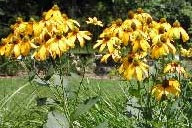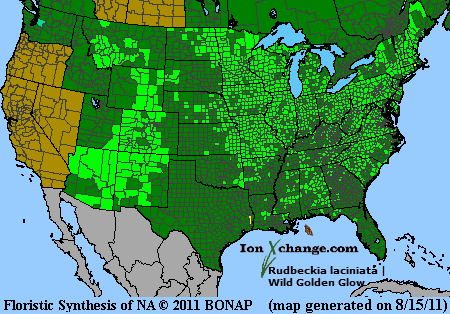 Loading... Please wait...
Loading... Please wait...- Home
- SEEDS
- SEED MIXES
- BUY PLANTS
- Info Request
-
Educational Videos
- Greenhouse Transplanting Demonstration
- Native Seed Cleaning demonstration at Ion Exchange Native Seed and Plant Nursery
- Attracting Butterflies
- Bidens - Bidens cernua Harvest Video
- Big Blue Stem Harvest
- Butterfly Milkweed Video
- Button Blazingstar - Liatris aspera Video
- Buttonbush - Cephalanthus occidentalis Video
- Canada Anemone - Anemone canadensis Harvest Video
- Cardinal Flower - Lobelia cardinalis Video
- Control Burn - Wildflower Field
- Cream Gentian - Gentiana flavida
- Culver's Root - Veronicastrum virginicum Video
- Cup Plant - Silphium perfoliatum Video
- Dormant Seeding | Planting
- Earthyman's Favorite Wildflowers Video
- Eco-Friendly Golf Course Seed Mix
- Floating Islands
- Fringed Loosestrife - Lysimachia ciliata Video
- Giant Yellow Hyssop - Agastache nepetoides Video
- Indiangrass - Sorghastrum nutans Video
- Iowa Prairie Partner Program
- Leadplant - Amorpha canescens (Potted) Video
- Meadow Blazingstar - Liatris ligulistylis
- Midland Shooting Stars - Dodecatheon meadii Video
- Native Plant Nursery Field Irrigation Experiment
- Nodding Onion - Allium cernuum Video
- Ohio spiderwort - Tradescantia ohiensis Video
- Old Man's Beard - Clematis virginiana blooms Video
- Oxeye Sunflower - Heliopsis helianthoides Video
- Prairie Spiderwort - Tradescantia bracteata
- Purple Coneflower - Echinacea purpurea Video
- Rain Garden or Water Garden Video
- Rattlesnake Master - Eryngium yuccifolium Video
- Riverbank Stabilization - Wetland Plants
- Rose Mallow - Hibiscus militaris Video
- Rosinweed - Silphium integrifolium Video
- Royal Catchfly - Silene regia
- Showy Tick Trefoil - Desmodium canadense Video
- Sneezeweed - Helenium autumnale Video
- Swamp Betony - Pedicularis lanceolata Video
- Swamp Milkweed - Asclepias incarnata Video
- Sweet Blackeyed Susan - Rudbeckia subtomentosa Video
- Tall Coreopsis - Coreopsis tripteris Video
- Urban Butterfly Garden
- Wild Bergamot - Monarda fistulosa Video
- Wild Geranium - Geranium maculatum Harvest
- Wild Goldenglow - Rudbeckia lanciniata Video
- Wild Petunia - Ruellia humilis Harvest Video
- Woodland Knotweed - Polygonum virginianum Video
- Yellow Coneflower - Ratibida pinnata Video
- Blog
- Resources
- Policies
Contact Us
Phone:
563-419-0837
or 563-535-7231
Email:
hbright@ionXchange.com
Browse Products
Add to Wish List
You Recently Viewed...
Our Newsletter
Product Description
"Wild Golden Glow. Green-headed Coneflower"
Rudbeckia named after Olof Rudbeck the elder (1630 - 1702) and the younger (1660 - 1740). Laciniata is from the Latin and means "deeply cut", referring to the leaves of this plant
| Sun Exposure | Prairie, Savanna, Woodland |
| Soil Moisture | Wet Mesic, Mesic |
| Bloom Time |
Summer, Fall July, August, September, October |
| Bloom Color | Yellow |
| Max Height | 7 feet |
| Wetland Code | FACW+ |
| Germ Code | C(30) |
| Seeds Per Ounce | 14,000 |
Similar to R. hirta and R. fulgida but with a greenish cone at the center of the orange-yellow ray flowers. The leaves are deeply cut and are 3- to 5-parted. Prefers moist, rich ground and thickets through the northern portions of the Tallgrass Prairie region. Very tall plant reaching 12 feet.
Native Americans used R. laciniata with Caulophyllum thalictroides (Blue Cohosh) to relive indigestion. They also used it as one ingredient in a poultice to ease the pain of burns. The early spring shoots were cooked and eaten by early settlers to promote good health.
Edible Uses: Edible young stems. Cooked and eaten in the spring for 'good health. The young stems can be eaten like celery. The stems can also be dried for later use. Some caution is advised, see the notes above on toxicity.
Medicinal Uses: A tea made from the root (mixed with Caulophyllum thalictroides) is used in the treatment of indigestion. A poultice of the flowers (mixed with Agastache anisatum and Solidago sp.) is applied to burns.
Other Uses: A green dye is obtained from the flowers.
Herbal Uses: Unknown
Product Videos
-
 Wild Goldenglo...Earthyman views Wild Goldenglow (Rudbeckia lanciniata) also kn...
Wild Goldenglo...Earthyman views Wild Goldenglow (Rudbeckia lanciniata) also kn...














